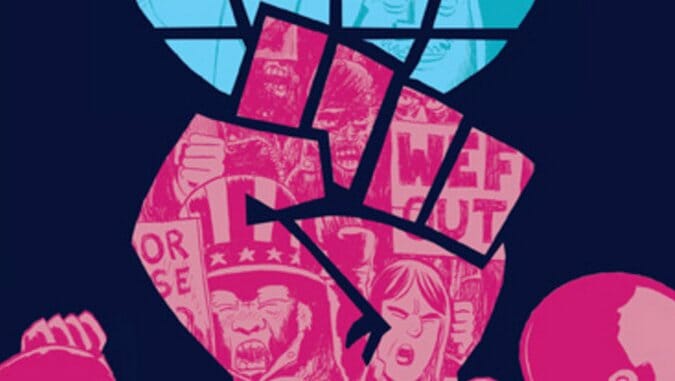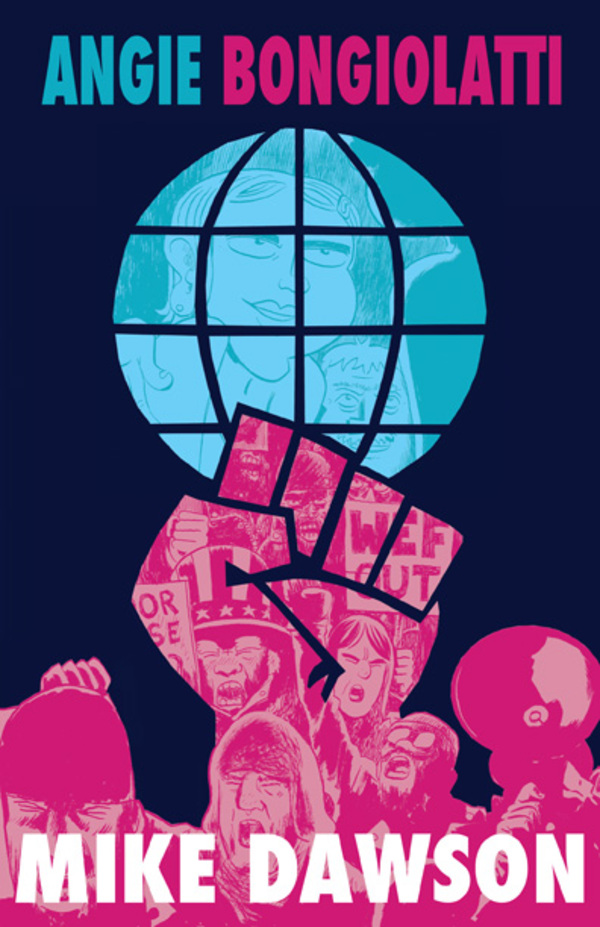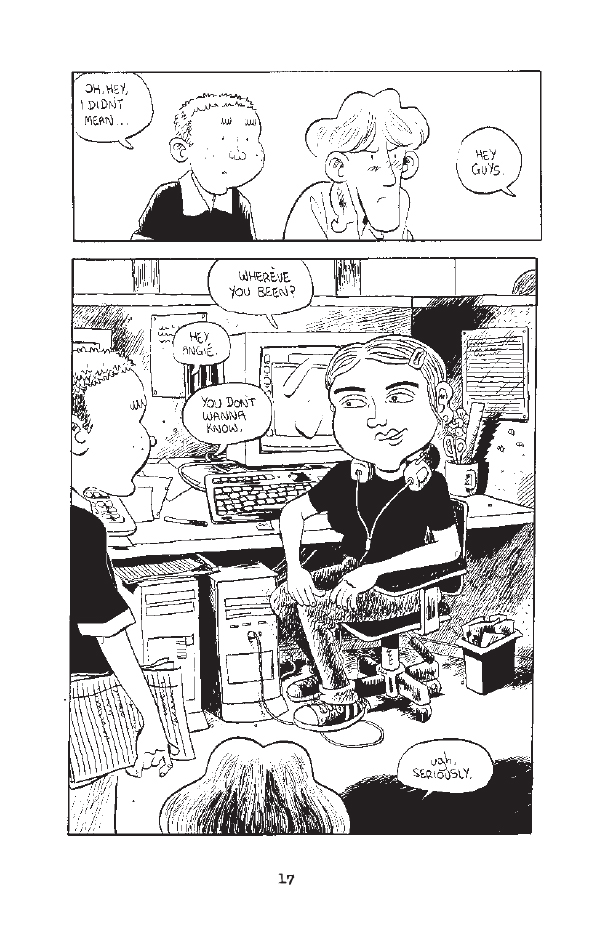
Writer/Artist: Mike Dawson
Publisher: Secret Acres
Release Date: April 15, 2014
Mike Dawson is comfortable working in grays, but this approach doesn’t necessary apply to his art in Angie Bongiolatti. Instead, his style relies on the simple interplay of black and white, rendering faces and body language with caricature charm. There’s no trace of the wash work that appeared in the creator’s earlier efforts, but even as this story studies the clash between radically opposed ideologies, it gently examines the complications in issues that can seem black and white while being anything but.
Set shortly after September 11, 2001 in New York, Angie Bongiolatti follows a group of young folks, many of whom work for an e-learning firm that crafts early versions of online courses. Craig draws storyboards; Matt and the titular Angie create animation; Jon, older with small children and an unhappy wife, manages. Amol and Malcolm, two of Angie’s friends from her college days, remain a part of their old friend’s life, as does Kim, a caustic, cynical revolutionary. Angie is the fulcrum the book hinges on, even though we see her primarily from the perspective of the others. She receives no time alone to reflect and introspect, no moments to converse about much other than the political rhetoric bantered inside her circle. Instead, she serves as a handy ambassador to recruit new faces to the socialist cause, reeling them in to help protest against the World Economic Forum meeting in New York.
But seeing Angie solely as a device would be doing Dawson’s story a disservice. The political points the book makes are more of a MacGuffin than a real focus, even though their discussion takes up an unwieldy percentage of the dialogue. Angie exists, rather, to reflect on the way we idealize charismatic people without allowing them flaws. We see them as the embodiment of our desires, objectifying them into creatures who will potentially meet all of our needs. Everyone just wants to get into Angie’s pants, and she’s not opposed to letting them, but that doesn’t mean they get to control the agenda.
These ideas don’t explore their full range, nor do they crystallize until the very end of the book, when some moments from the characters’ pasts provide a helpful lens to frame the holistic narrative. But the concept is complicated enough to enliven what is otherwise a fairly bland story about the dangers of a revolutionary mindset. As some of the final words of the book state, better to “celebrate the good where we can find it” than to burn everything down because it’s not perfect.




